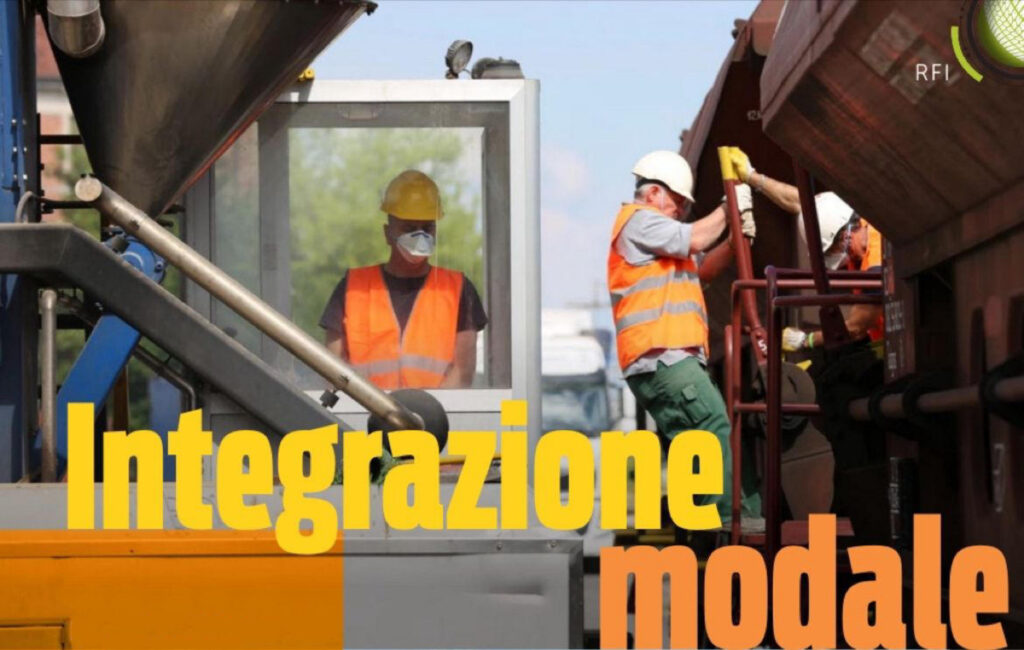
In the infrastructure sector, in particular, a long-standing delay has become apparent. Addressing these issues is therefore crucial to enabling all stakeholders to build a future in which mobility is fast, safe, and environmentally sustainable. This is the context in which EasyRailFreight was born—a concrete contribution to the decarbonization challenge through the digitalization of logistics processes.
Download the full article in PDF format
The project, designed and implemented by RFI, the lead company of the Infrastructure Hub of the FS Group, focuses on intermodal road-rail logistics. As such, the platform’s goal is to promote and develop intermodal services by creating an information system that facilitates the matching of supply and demand, while also simplifying access to ancillary services through a comprehensive overview of what the market offers.
How Intermodal Services Will Improve
EasyRailFreight improves communication around intermodal logistics services, supports the integration of various transport modes, reduces complexity, and enhances the quality of logistics processes from a service-oriented perspective. This aligns with the European Union’s transport decarbonization objectives.
The platform offers numerous benefits for both the production and logistics systems. These include:
- Better communication and promotion of available intermodal transport services, leading to greater efficiency and service quality.
- An increase in intermodal traffic volumes, with related system benefits in terms of decarbonization, sustainability, and competitiveness.
- Greater reliability and flexibility of logistics service offerings, making them more robust and efficient in support of the production system.
The platform comprises several modules—some already operational—that facilitate modal shift and manage informational flows in rail transport. These include:
- “Service Showcase” and “Service/Facility Registry” (both already active): designed to promote intermodal service offerings available on the market, based on scheduled freight train timetables, enriched by information provided by operators. Users can enter a departure/arrival location and receive detailed service info such as pickup/delivery schedules, available services with contact info, and a CO₂ emissions comparison between intermodal and road-only solutions.
Starting in January, development began on:
- “New Transport Configurator”: allows users to build a door-to-door route using RFI’s residual train path catalog.
- “AT.L.A.S.” (Logistics Atlas of Assets and Services): aims to provide a geo-referenced overview of terminal infrastructure characteristics and associated services, helping match supply and demand and enabling logistics solutions tailored to real market needs.
AT.L.A.S. will be built on GIS technology, allowing geospatial data on infrastructure and logistics services to be archived, visualized, and analyzed. It’s a scalable system, operable on any network model, useful both as a consultation platform and as a “logistics map of the country” available to the market.
Other modules include:
- “Eco/Ferrobonus Reporting”: for requesting and tracking subsidies that support intermodality.
- “Analysis and Reporting”: for performance analysis and generating sector-specific freight traffic reports.
Among the main benefits of using EasyRailFreight:
- Easier access to existing services
- Improved information flow quality
- Better use of infrastructure and terminals
- Potential growth in intermodal traffic volumes, with system-wide gains in decarbonization and sustainability.
The future of freight is also digital.
RFI’s Role in Logistics
In the realm of multimodal logistics services, RFI remains at the center of the transport system. It fulfills this role by focusing on strategic connections, particularly through the European freight corridors, which carry the highest volumes of goods, and by improving links between ports, freight villages, terminals, and industrial sidings.
In this context, RFI plays a proactive role in developing services for the logistics sector, identifying high-demand segments, enhancing operational conditions, and reducing costs.
This enables RFI to contribute to modal integration, which must be supported by:
- a sound understanding of commercial needs,
- the design of attractive and economically sustainable services,
- and the implementation of necessary infrastructure upgrades.
RFI thus supports the production and distribution system, with railway infrastructure acting as the backbone of the national logistics network, linking:
- ports, the main gateway to global markets,
- terminal networks, essential for developing multimodal logistics,
- and road freight transport, structured to serve the country’s production system with reach and efficiency.
In short, RFI serves as the interconnecting hub that links all these components, enabling communication between them, reinforcing the system, and creating the conditions needed to boost intermodality.
To achieve this, rail infrastructure is placed at the heart of the national logistics chain, acting as a modal integrator by promoting dialogue and cooperation with other transport modes. This approach supports the pursuit of social, environmental, and economic sustainability goals.
As the lead company of the Infrastructure Hub, RFI’s mission is now to enhance and integrate rail and road infrastructure, making them more modern, resilient, interconnected, and accessible to all.
Because freight must move with the times.
Download the article in PDF format: https://www.erf.rfi.it/it/integrazione-modale/#flipbook-df_773/1/
Credits
di Andrea Trapani, pubblicato sul n. 246 di Trasportare Oggi